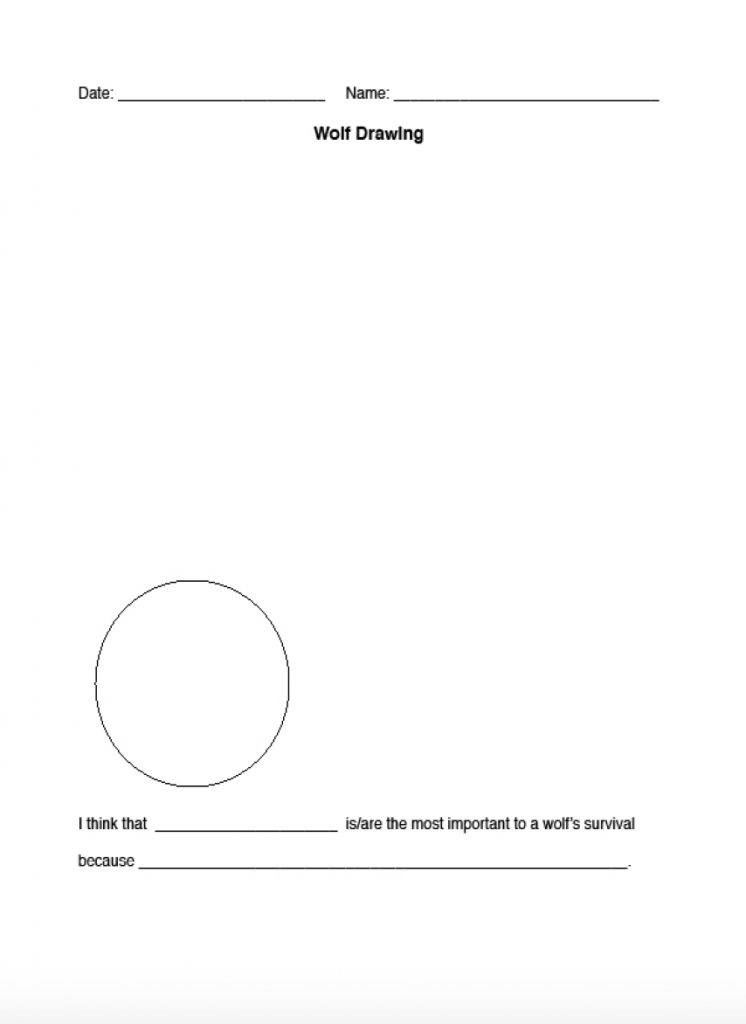Wolf Island won the Best Information Book Award from the Children’s Literature Roundtable of Canada in 1990. This achievement established Celia Godkin’s career as an author and illustrator of creative non-fiction for children. (First published in 1989, a new edition of Wolf Island was released in 2006 to help celebrate Fitzhenry & Whiteside’s 40th anniversary.)
Celia had been looking for some examples in nature that would help her to teach children about the connections between all living things in an ecosystem. This is how she explains the development of the Wolf Island story:
I found several examples of places where wolves had been exterminated by hunters, and the result was there were too many deer. That gave me the idea for Wolf Island. Then I found an example of wolves crossing the ice to an island where there were too many moose (Isle Royale in Lake Superior), which gave me the idea for how to end the story. I wanted to bring the island back into balance at the end by returning the wolves.
Note: Isle Royale is the site of the longest continuous study of any predator-prey system in the world. For five decades researchers have been following the wolf and moose population there. For more information go to the Wolves and Moose of Isle Royale website: http://isleroyalewolf.org
 Wolf Island
Wolf Island
by Celia Godkin
Fitzhenry and Whiteside, 1993
ISBN 978-1554550-08-1
$9.95, 32 pp, ages 7 – 9
fitzhenry.ca
Plot Summary
The story begins on an island where the ecosystem is well balanced and healthy. A family of wolves leaves the island, drifting to the mainland on a log raft. With the highest link in the food chain gone, the deer begin to grow in number. Eventually the deer consume so much of the vegetation that the rabbits, mice and squirrels have less to eat. The owls and foxes then have fewer animals to hunt. Soon, all the creatures face starvation. The wolf family was also thin and hungry because they had not been able to establish a hunting territory on the mainland. The following winter when the temperature was very cold, ice began to form on the water around the island and along the mainland coast. When the ice stretched all the way from the island to the mainland, the wolf family travelled across it to their old home. The wolves found many sick and weak deer to hunt. By spring the old food chain had been established and the life on the island had returned to its former balance.
Note: Celia Godkin has provided a teachers’ guide for Wolf Island on her website: celiagodkin.com
MAKING PREDICTIONS
A Pre-Reading Lesson
Materials Required
- 1 pencil and 1 sheet of drawing paper per student (or a worksheet similar to the sample at the end of the article)
- a selection of wolf photographs (wildlife calendars are a good source)
Goals
- To access the students’ prior knowledge about wolves.
- To have students predict what the story will be about.
Step One
- Display the wolf photographs for the students to look at.
- Have each student talk to a predetermined partner. Ask them to name what they think are the most important features of a wolf’s body.
- Have the students report their information to the whole class. List their important features on the chalkboard. The list might look like this: paw, muscles, long legs, jaw, tail, fur (pellage), ears, nose, teeth, etc.
Step Two
- Distribute a copy of the directed drawing paper to each student.
- Draw a wolf on the chalkboard. Have the students draw on their papers following your example. Talk about the various features as you go along. The conversation might sound something like this: “Now let’s add the ears. Did you know that wolves can turn their ears from side to side so that they can tell what direction the sound is coming from without turning around? They rely on their good sense of hearing when they hunt.” When the drawings are finished, use the chalkboard version to model labelling. Label all the important features from the list generated earlier in the lesson.
- Have the students label their own drawings.
- Have each student talk to the same partner. Ask them to choose one feature of the wolf that they feel is the most important to its survival.
- Have the students draw and label their chosen “important feature” inside a circle at the bottom of the page.
Step Three
- Have the students stand up and move around the classroom to look at a minimum of five of their classmates’ drawings. Ask them to see if they can find someone else who drew the same “most important feature” as they did.
- When the students are seated again ask them to share their findings. Have the students discuss why that feature is so important to a wolf’s survival. Have them justify their opinion “ I think that … is/are most important to a wolf’s survival because …”
- Have them complete the statement at the bottom of the drawing page.
Reflection
- Show the cover of Wolf Island to the class.
- Ask the students to turn to the same partner and make a prediction as to what they think the story will be about.
- Have some students share their predictions with the whole group.

ABOUT THE AUTHOR
Brenda Boreham
Brenda has 35 years of classroom experience. She has presented workshops on literature based themes and literacy strategies, and has written a number of resources for teachers. She remains passionate about matching up kids with books.
This article is from Canadian Teacher Magazine’s Jan/Feb 2013 issue.











